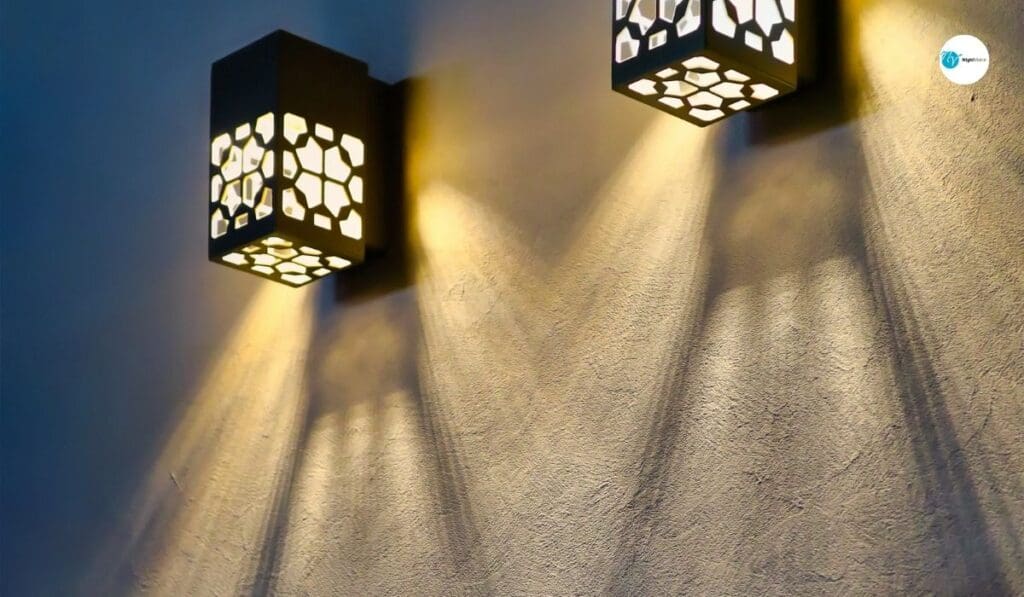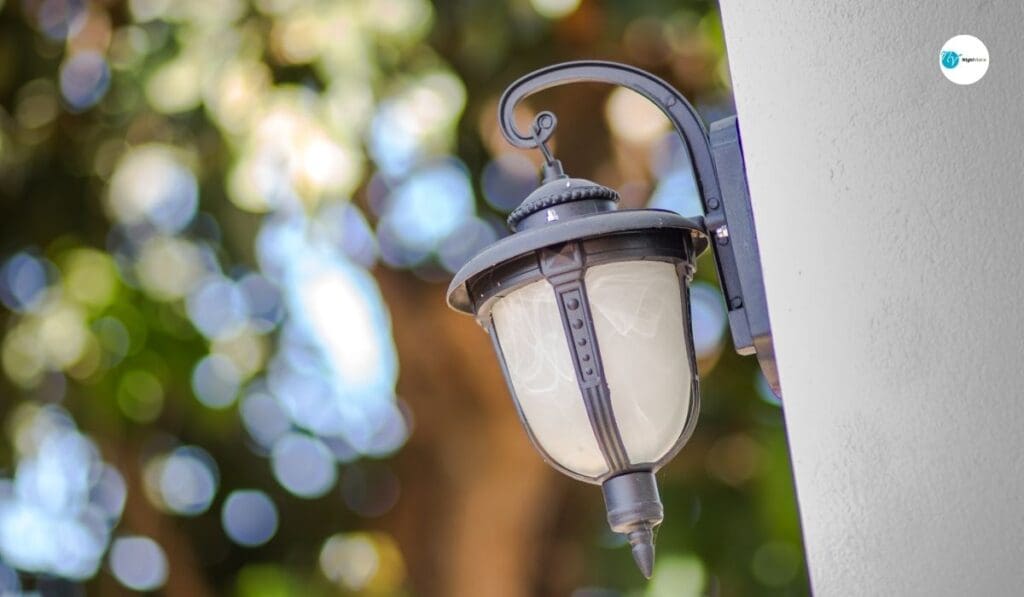Outdoor lighting plays a crucial role in enhancing the ambiance, functionality, and safety of outdoor spaces.
Whether you’re designing lighting for a residential backyard, a commercial plaza, or a public park, careful planning is essential to achieve the desired aesthetic and functionality.
Custom outdoor lighting allows you to tailor the illumination to suit your specific needs and preferences.
In this article, we’ll explore the key considerations to keep in mind when designing custom outdoor lighting.
Purpose and Functionality:
Before diving into the design process, it’s essential to determine the primary purpose of the outdoor lighting.
Are you looking to illuminate pathways for safety, highlight architectural features, create ambiance for outdoor entertaining, or all of the above?
Understanding the intended functionality will guide your design decisions and help prioritize lighting elements accordingly.
Landscape and Architectural Features:
Take stock of your outdoor space’s existing landscape and architectural features.
Consider how lighting can accentuate these elements to create visual interest and focal points.
For example, strategically placed lights can highlight trees, shrubs, sculptures, or water features, adding depth and dimension to the landscape.
Similarly, architectural lighting can emphasize the unique design elements of buildings, facades, and outdoor structures.
Lighting Techniques:
Custom outdoor lighting allows for the implementation of various lighting techniques to achieve different effects.
Some standard methods include:
- Uplighting: Placing lights at ground level to illuminate trees, bushes, and architectural features from below.
- Downlighting: Mounting lights overhead to cast a soft, diffused glow onto pathways, patios, and outdoor seating areas.
- Wall Washing: Installing lights to wash vertical surfaces with light, creating a visually appealing backdrop and enhancing architectural textures.
- Silhouetting: Positioning lights behind objects to create striking silhouettes against walls or other surfaces.

By incorporating a combination of these techniques, you can create layers of light that add depth and drama to your outdoor space.
Light Quality and Color Temperature:
The quality of light emitted by outdoor fixtures significantly impacts the overall ambiance and mood. Consider the color temperature of the light measured in Kelvin (K).
Warmer color temperatures (2700K-3000K) tend to create a cozy, inviting atmosphere ideal for residential settings, while cooler temperatures (4000K-5000K) are better suited for task lighting and commercial applications.
Additionally, opt for high-quality LED fixtures that provide energy efficiency, longevity, and customizable lighting options.
Energy Efficiency and Sustainability:
Incorporating energy-efficient lighting solutions not only reduces utility costs but also minimizes environmental impact.
Choose LED fixtures with programmable controls, such as timers, dimmers, and motion sensors, to optimize energy usage and reduce light pollution.
Additionally, consider solar-powered lights for areas with limited access to electrical outlets, further enhancing sustainability and eco-friendliness.
Safety and Security:
Outdoor lighting serves a practical purpose in enhancing safety and security around your property—illuminate pathways, stairs, and entryways to prevent trips and falls, especially in low-light conditions.
Install motion-sensing lights near entrances and dark corners to deter intruders and enhance visibility at night.
Additionally, consider incorporating intelligent lighting systems that allow remote monitoring and control of outdoor lights for added convenience and peace of mind.
Dark Sky Compliance:
As awareness of light pollution grows, more emphasis is being placed on dark sky compliance in outdoor lighting design.
Dark sky-friendly fixtures are designed to minimize upward light dispersion, directing the majority of light downward where it’s needed.
By reducing light pollution, dark sky-compliant lighting not only preserves the natural beauty of the night sky but also promotes the health and well-being of nocturnal wildlife.
Weather Resistance and Durability:
Outdoor lighting fixtures are exposed to the elements year-round, making weather resistance and durability essential considerations.
Choose fixtures constructed from high-quality, weather-resistant materials such as aluminum, stainless steel, or corrosion-resistant polymers.
Ensure that fixtures have an appropriate IP (Ingress Protection) rating to withstand exposure to moisture, dust, and extreme temperatures without compromising performance or safety.
Zoning and Regulations:
Before finalizing your outdoor lighting design, familiarize yourself with local zoning regulations and lighting ordinances.
These regulations may dictate factors such as maximum light output, fixture placement, and allowable color temperatures to ensure compliance with environmental standards and neighborhood aesthetics.
Consulting with a professional lighting designer or seeking approval from local authorities can help avoid potential legal issues and fines down the line.
Maintenance and Accessibility:
Regular maintenance is crucial for ensuring the longevity and performance of outdoor lighting systems.
When designing your custom lighting layout, consider accessibility for maintenance tasks such as bulb replacement, fixture cleaning, and wiring inspections.
Choose fixtures with easy-to-access components and opt for modular designs that simplify maintenance and troubleshooting processes—additionally, factor in ongoing maintenance costs and responsibilities when budgeting for your lighting project.
Integration with Smart Home Technology:
Harness the power of smart home technology to enhance the convenience, efficiency, and flexibility of your outdoor lighting system.
Smart lighting controllers and apps allow you to program schedules, adjust brightness levels, and create custom lighting scenes remotely from your smartphone or tablet.
Integration with voice-controlled assistants like Amazon Alexa or Google Assistant enables hands-free control of outdoor lights, adding convenience and modern functionality to your outdoor living space.
Aesthetic Considerations:
Beyond functionality, outdoor lighting contributes to the overall aesthetic appeal and ambiance of your outdoor space.
Pay attention to the design and aesthetics of lighting fixtures, selecting styles that complement the architectural style and landscaping elements of your property.
Consider factors such as fixture finish, shape, and design details to ensure a cohesive and visually pleasing lighting scheme that enhances the beauty and character of your outdoor environment.
Conclusion
Designing custom outdoor lighting requires careful consideration of various factors, including purpose, landscape features, lighting techniques, light quality, energy efficiency, safety, sustainability, dark sky compliance, zoning regulations, maintenance, accessibility, smart home integration, and aesthetic considerations.
By prioritizing these aspects and collaborating with a professional lighting designer or contractor, you can create a well-lit outdoor environment that enhances the beauty, functionality, and security of your space for years to come.
Ready to illuminate your outdoor oasis? Contact us at NightVision Outdoor Lighting to bring your vision to light.
FAQs
What are the primary considerations when designing custom outdoor lighting?
The primary considerations include:
- Determining the purpose and functionality.
- Assessing landscape and architectural features.
- Selecting appropriate lighting techniques.
- Considering the light quality and color temperature.
- Ensuring energy efficiency and sustainability.
- Prioritizing safety and security.
- Adhering to dark sky compliance.
- Ensuring weather resistance and durability.
- Understanding zoning and regulations.
- Planning for maintenance and accessibility.
- Integrating with smart home technology.
- Paying attention to aesthetic considerations.
How do you determine the purpose and functionality of outdoor lighting?
Understanding whether the lighting is meant for safety, highlighting architectural features, creating ambiance, or a combination of these factors is crucial. This determination guides the design decisions and helps prioritize lighting elements accordingly.
What landscape and architectural features should be considered for outdoor lighting design?
Existing features such as trees, shrubs, sculptures, water features, buildings, facades, and outdoor structures should be assessed to determine how lighting can accentuate them and create visual interest and focal points.
What lighting techniques can be employed in custom outdoor lighting design?
Techniques such as uplighting, downlighting, wall washing, and silhouetting can be utilized to achieve various lighting effects and create layers of light that add depth and drama to outdoor spaces.
How do light quality and color temperature impact outdoor lighting design?
The color temperature of light significantly affects the ambiance and mood. Warmer temperatures create a cozy atmosphere, while cooler temperatures are better for task lighting. Selecting high-quality LED fixtures ensures energy efficiency, longevity, and customizable lighting options.
Why are energy efficiency and sustainability important in outdoor lighting?
Incorporating energy-efficient lighting solutions reduces utility costs and minimizes environmental impact. LED fixtures with programmable controls and solar-powered lights enhance sustainability and eco-friendliness.
How does outdoor lighting enhance safety and security?
Illuminating pathways, stairs, and entryways help prevent accidents, while motion-sensing lights deter intruders and enhance visibility at night, promoting safety and security around the property.
What is dark sky compliance, and why is it essential in outdoor lighting design?
Dark sky-friendly fixtures minimize light pollution by directing the majority of light downward, preserving the natural beauty of the night sky and promoting the health and well-being of wildlife.
What factors should be considered for weather resistance and durability in outdoor lighting fixtures?
Selecting fixtures constructed from high-quality, weather-resistant materials and ensuring appropriate IP ratings to withstand exposure to moisture, dust, and extreme temperatures are essential for durability.
How can one ensure compliance with local zoning regulations and lighting ordinances?
Familiarizing oneself with local regulations regarding factors such as maximum light output, fixture placement, and allowable color temperatures is crucial. Consulting with professionals or local authorities can help ensure compliance and avoid legal issues.
Why is integration with smart home technology beneficial for outdoor lighting?
Smart home technology enhances the convenience, efficiency, and flexibility of outdoor lighting systems by allowing remote programming, adjusting brightness levels, and enabling voice-controlled operation, adding modern functionality to outdoor living spaces.
How do aesthetic considerations contribute to outdoor lighting design?
Paying attention to the design and aesthetics of lighting fixtures ensures they complement the architectural style and landscaping elements, contributing to a cohesive and visually pleasing lighting scheme that enhances the beauty and character of outdoor environments.




